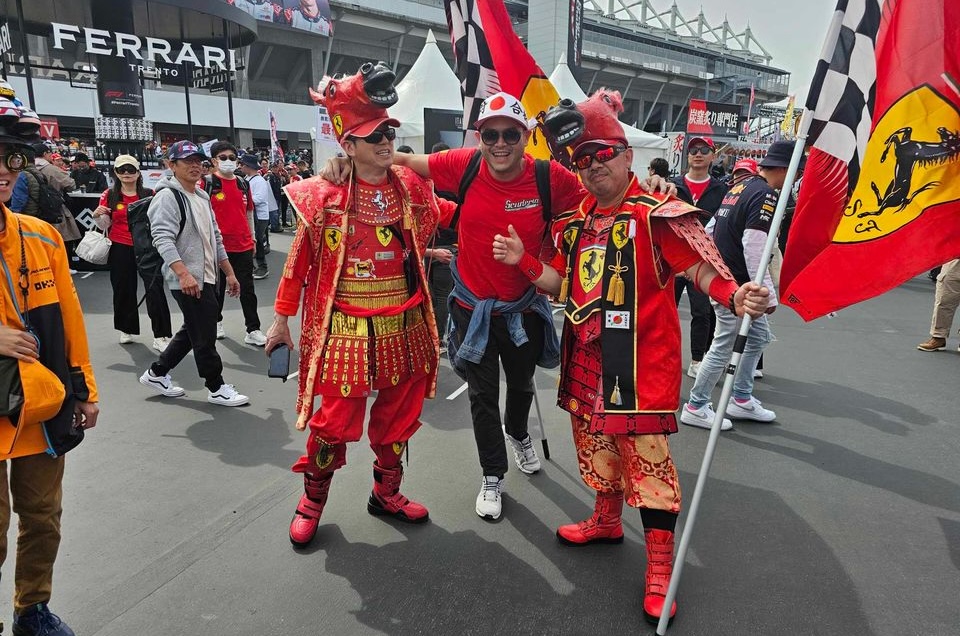
Robert, Kate and Ian attended this year’s Japanese Grand Prix at Suzuka and share their experiences and advice.
- Tickets are now on sale for the 2025 Japanese Grand Prix.
- We also recommend F1 Experiences Ticket Packages
- This post contains affiliate links. We may receive a commission if you make a purchase after clicking on one of these links
Robert from Germany
I always wanted to visit Suzuka, ever since I watched Michael Schumacher win his third drivers’ title at the circuit on TV in 2000 when I was just eight years old. After years of planning and a big delay due to the COVID-19 pandemic, I finally managed to book the trip for this year.
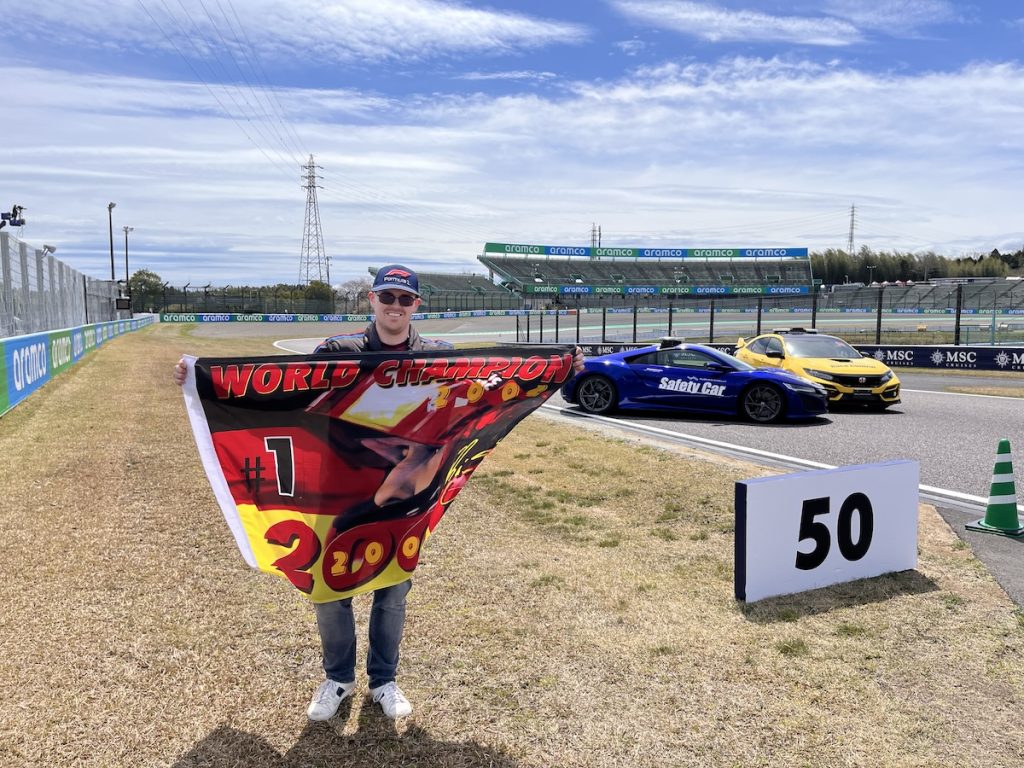
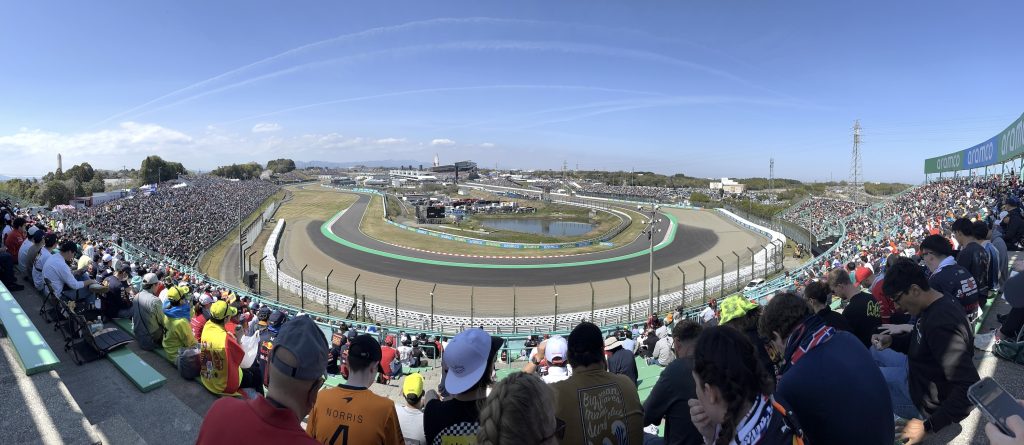
B2 Grandstand
I narrowed down my options to Q2 (overlooking the chicane at the end of the lap) and B2 (on the outside of the first two turns). In the end I opted for B2 Grandstand. It was one of the more expensive ones, but it was worth every cent. The grandstand has an awesome view of Turn 1 and Turn 2, as well as a distant view of the high-speed esses. There was lots of action and many overtakes during the race into Turn 1.
To make the most of my weekend at Suzuka, I also went to the track on Thursday morning for the pit lane walk. After that, I walked the whole track to help decide where I wanted to sit on “Free Friday”. (All the grandstands are open on Friday at Suzuka, apart from V1/V2).
On Friday I opted to sit in the two temporary stands near Grandstand I. The first one especially, is very close to the track and the hairpin apex, which offers great views of the cars at low speed.
Fan Zone at Suzuka Circuit
The fan zone was very well organized, with many shops selling F1 teams and circuit merchandise. I was there briefly on Thursday, to have some food and rest as well as buying my merchandise. Over the weekend and especially on Sunday morning it was very crowded and the stores were selling out of everything.
Japan is also one of the few current races that still sells a printed race programme, which I love to collect. Unfortunately it was only available in the Japanese language.
I personally don’t need to see the driver interviews or concerts on the fan stage. I’m an old school fan that thinks the drivers should let their driving do the talking. I am visiting for the on-track action not the concerts or special events. Having said that, the fan zone at Suzuka was probably one of the best ones I have seen on the calendar, and it was also very family friendly. There’s also a theme park right next to the fan zone, but I missed out on this on Thursday as I wanted to walk the track.
Food & Drink
Plenty of options were available, from Western Food to Japanese Food. If you travel from abroad, I recommend going for the local food like noodles or rice with vegetables and meat. It’s good quality, delicious and better than the burgers, sausages and fries you get at Western races. Food and drink prices were also reasonable. A half liter coke cost around €1.50. You can buy at the stalls or from vending machines (but you need cash for the vending machines). It feels like the Japanese are not trying to rip you off or get every last penny from your pocket, unlike at some races in Europe!
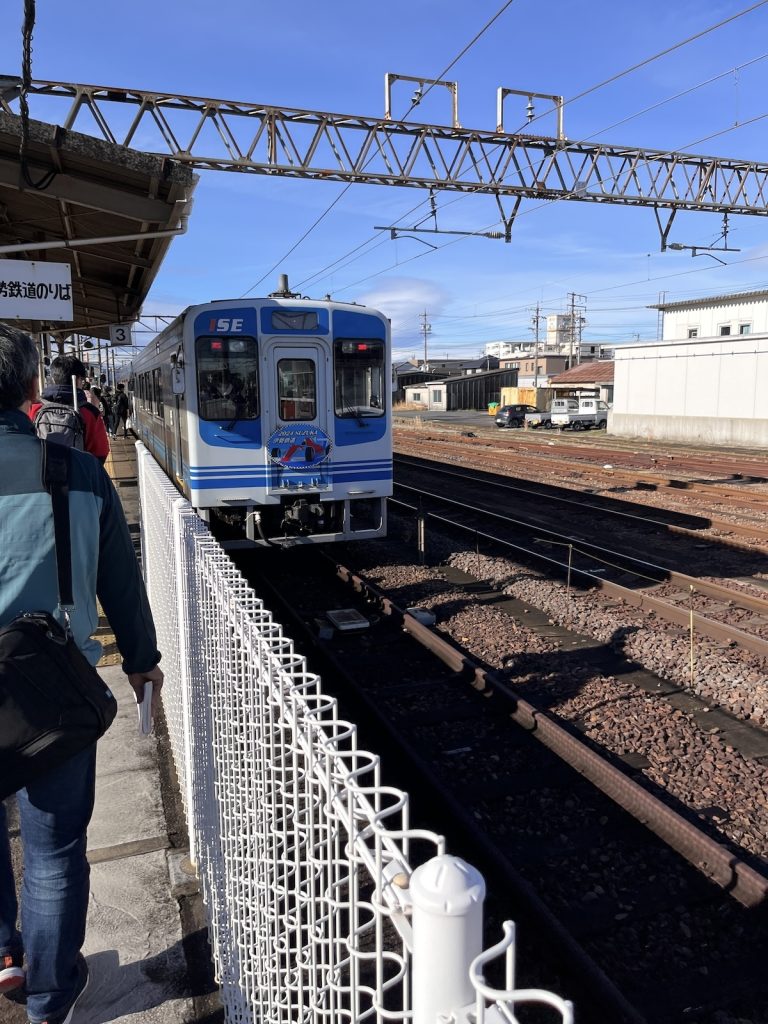
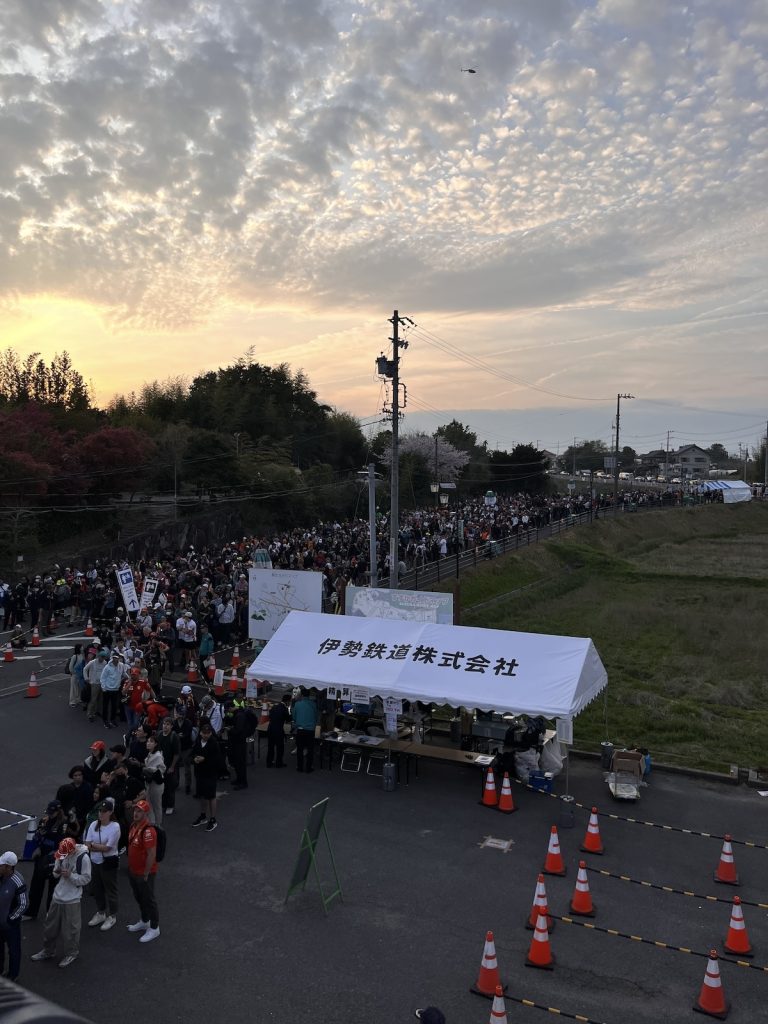
Taking the Tain to Suzuka
Honestly, it took me a while to decide whether to take the JR Line to Suzuka Ino Station (and walk to the track) or the Kintetsu Line to Shiroko Station, followed by a shuttle bus to the track. I opted to go for the JR Line to Suzuka Ino Station, and it was easier than I thought it would be.
As I arrived a few days early in Nagoya, I stopped by Nagoya Station on Wednesday before race weekend and visited the tourist booth in the big hall at the JR Towers. The woman spoke good English and had a flier that showed both options, as well as tell me where I could buy train tickets for the JR Line.
I bought return tickets for all 4 days which cost 2,140 Yen ($13.75 USD) per day and included the base fare ticket. You can use most trains, except the Limited Express Trains. The fare included the extra costs for the Ise Railway, a private train company stopping at Suzuka Ino.
On Thursday and Friday, I opted for a train in the morning that required a transfer in Yokkaichi Station from JR Line to Ise Railway. In total it took 1.5 hours from Nagoya Station to Suzuka Circuit. It was easy on Thursday, but got very cramped on Friday as the train at Ise Station only had two carriages. On Saturday and Sunday, I took special direct trains (50 minutes) to Suzuka Ino Station at no extra cost.
Walking from Suzuka Ino station to Suzuka Circuit is very easy and took about 15 to 20 minutes. If you have a ticket for one of the grandstands around the East Course Area (Start/Finish & Esses), the gate is closest to Suzuka Ino Station. If you have a ticket for the West Course Area, you can either walk another 30-45 minutes (depending on your ticket) or take an internal shuttle.
Leaving the circuit, I was lucky to catch direct trains on all four days, with no transfers required. There was no queues at the station leaving on Thursday. On Friday, I waited 30 minute and on Saturday and Sunday, about 60-75 minutes. It wasn’t too long to wait, but the trains were really packed on the way home.
Conclusion
I had pretty high expectations about my trip to the Japanese Grand Prix and I must say that they were met!
Suzuka Circuit is a wonderful circuit, the surrounding area (countryside) is also nice. The track is awesome, and it felt amazing to walk around the circuit, having watched so many races here over the years.
The whole organization at the track is good, directions were well signposted but what I liked most were the Japanese Fans! I’ve been to many Grands Prix around the world, but I have never experienced the whole crowd in the grandstand staying in their seats and watching the entire race! At other races, people stand up during the race start or stand in the aisles. There was none of that in Suzuka. It really was great to tick this iconic race off my F1 bucket list, and I hope to return again in the future.
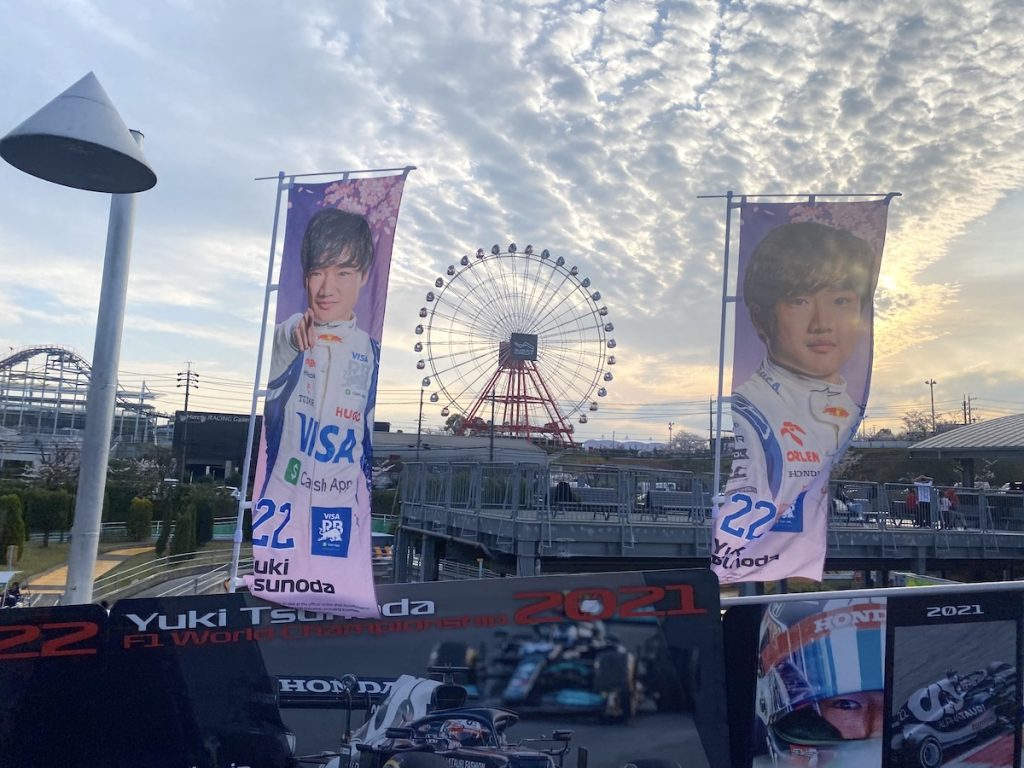
Kate From The USA
TLDR: Suzuka Circuit was absolutely gorgeous with the cherry blossoms, and the atmosphere was race-focused. The fans were extremely polite and were obviously invested in the race as they stayed from track open to close. For the most part, transportation to and from the track was efficient and easy. The Champions Club hospitality packages were worth the cost due to viewing multiple areas of the track including the pit lane. I regret not coming a few days early to go to the events in Tokyo and to visit the Toyota Museum.
Arrival & Getting to Nagoya
We arrived too late to make it to the track or any events in Tokyo. After arriving in Tokyo from Atlanta, we took the train from the airport to Tokyo station. We booked the Shinkansen Nozomi bullet train to Nagoya online in advance, however we booked a time that was too early and missed our train! We had to exit the platform and re-enter the Shinkansen terminal after getting our tickets reissued.There are three types of Shinkansen tickets, a “Green Car” business class reserved seating, a regular reserved seat, and an unreserved seat. Large luggage bags have to be reserved, but standard carry-on suitcases can fit in the overhead bins.
If you reserve a time and are late, the ticket can still be used on another time that day, however your reserved seats are forfeited. It is possible to purchase Shinkansen tickets at kiosks at the station as they run very frequently. The time to Nagoya was 1.5 hours, and there is free Wifi available. As soon as we arrived at Nagoya Station, we went to the customer service desk to activate our Kintetsu Rail Passes that we purchased online prior to the trip. I highly recommend doing this before race weekend as the line was extremely long on Friday morning. Passes were physical tickets. Since we had luggage, we used a taxi to get to our hotel.
Nagoya
We stayed at Hotel MYSTAYS Nagoya Nishiki, which was about a 15 minute combined subway ride and walk from Nagoya station. I personally liked this hotel, as I travel light and only use the hotel for sleeping and hygiene purposes when I travel. I only saw two other F1 fans going in and out of the hotel. I do not recommend this hotel for people with large luggage or those that prefer luxury amenities.
We were within walking distance of several restaurants and bars. Our favorites were Gaburi Chicken, Japanese fried chicken and small plates, and Unafuji, which served the traditional grilled eel dish (Hitsumabushi) that is famous in Nagoya. Expect to wait in lines to enter restaurants!
I recommend coming a day early if you want to visit the Toyota museum, because most museums in Japan are closed on Mondays. On Monday morning, we walked 30 minutes to Nagoya Castle, which was stunning. I highly recommend going to at least one castle in Japan. The inside of the castle was not open to the public, but the “palace” was open and exhibited the architectural artwork that would’ve decorated the castle during its peak. I also recommend Osaka Castle, which is available to explore inside and mainly focuses on the siege of the castle in 1614.

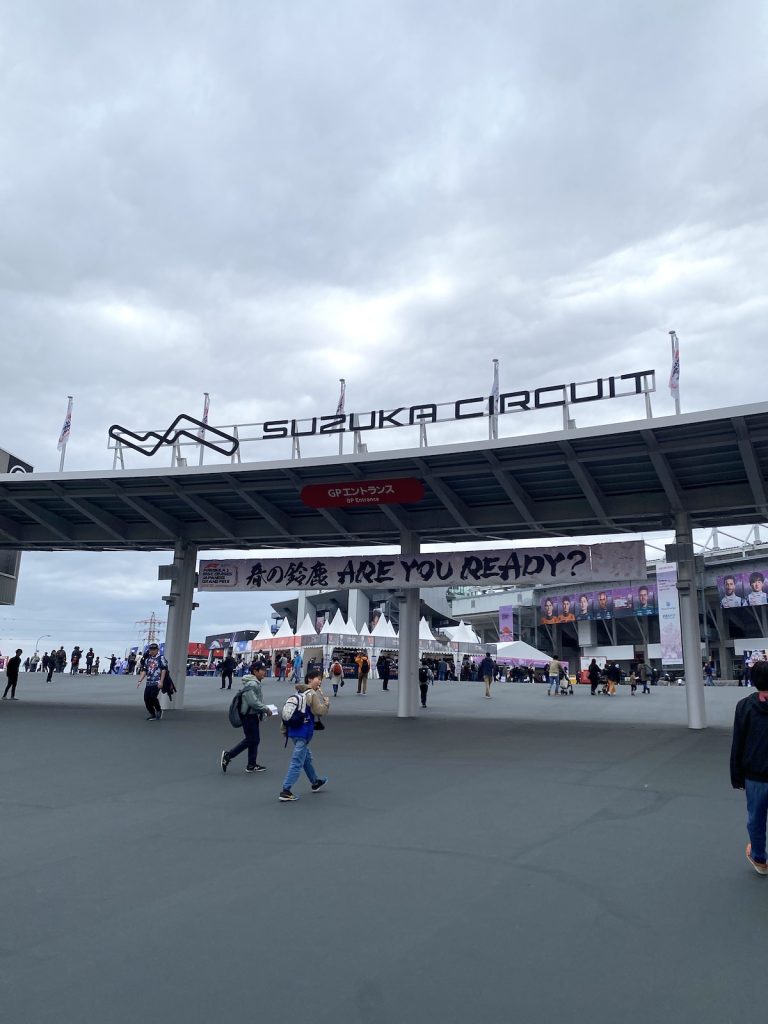
Champions Club Hospitality
I chose a Champions Club hospitality package for Suzuka, in order to have all-inclusive food and beverage, and a Paddock tour. But I was also very impressed with the location of the Champions Club and the hospitality provided by the F1 Experience team.
Physical passes were delivered to our residence two weeks before the race, or you could also request on site pick-up if necessary. The package also included free gifts that could be ordered online. Customer service with F1 Experiences in the United States was very good. They answered phone calls and emails punctually. At the track, the tunnel to the club was fairly long and there was only one elevator up and down, so we had to plan extra time across the weekend to wait for the elevator if we left the area.
The Champions Club dress code was “smart casual”, where most men wore collared shirts or polos, and most women wore dresses or slacks. To my surprise there were two views of the track from the Champions Club. The main view was over the start/finish line and starting grid, which also overlooked the pit lane. The secondary view from the back was of the S curve and Gayaku Bank. We also had a view of the Paddock entrance and saw many drivers enter the Paddock area and media tents.
Seating included two covered patios with tables, and stadium seating overlooking the pit lane. Seating was unassigned and first come first serve. The temperature was a little chilly, but the patio had portable heaters and blankets were provided by F1 Experiences. The food was a mix of Japanese, Indian, and Italian, which were all phenomenal and served at the tables.
The open bar included red and white wine, sparkling wine, and Heineken beer. The Champions Club passes provide photos with the championship trophy on the track, and a Paddock tour. Our tour was on Sunday morning, and was conducted by a local Expert Host from the Paddock Club. There was ten of us on the tour and we were able to take pictures. We saw Lewis Hamilton, George Russell, Fred Vasseur, Logan Sargeant, Nico Hulkenberg and Valteri Bottas in the Paddock.
Being race day, we did not ask for selfies or autographs; we just waved or said hello, but groups that went on previous days were able to approach the drivers more openly. My favorite celebrity sighting was David Croft who came to the Champions Club to speak, and was such a funny and positive personality. Zhou Guanyu also visited the Champions Club for an appearance.
3-Day Champions Club Ticket Packages from F1 Experiences are now on sale for the 2025 Japanese Grand Prix
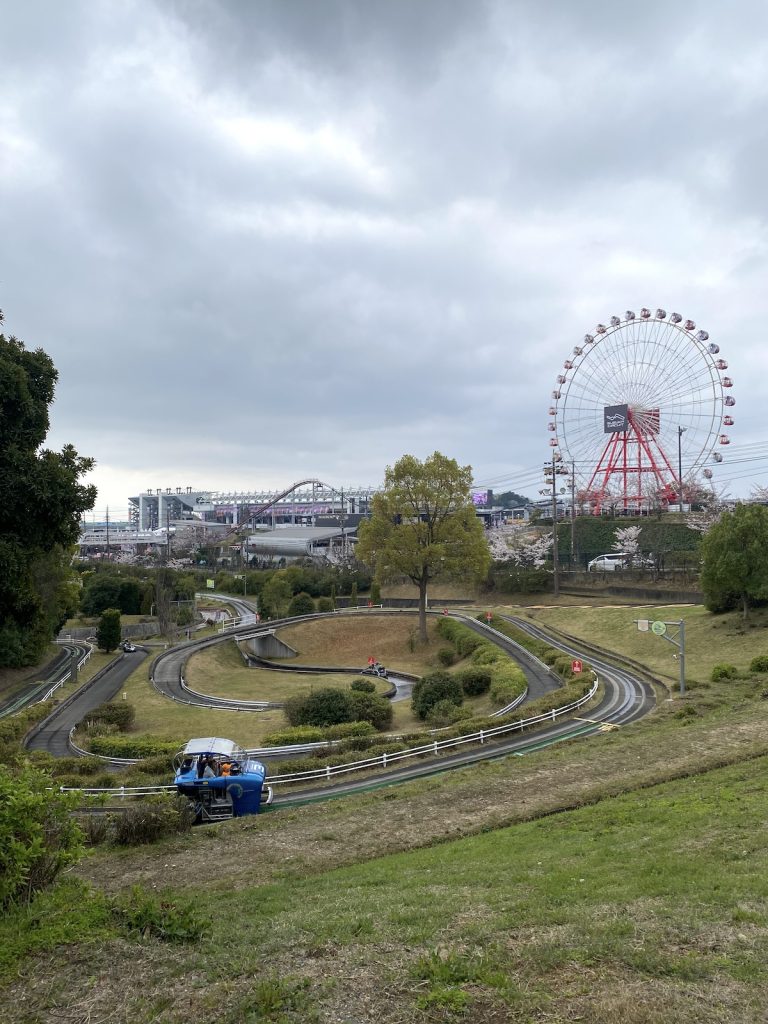
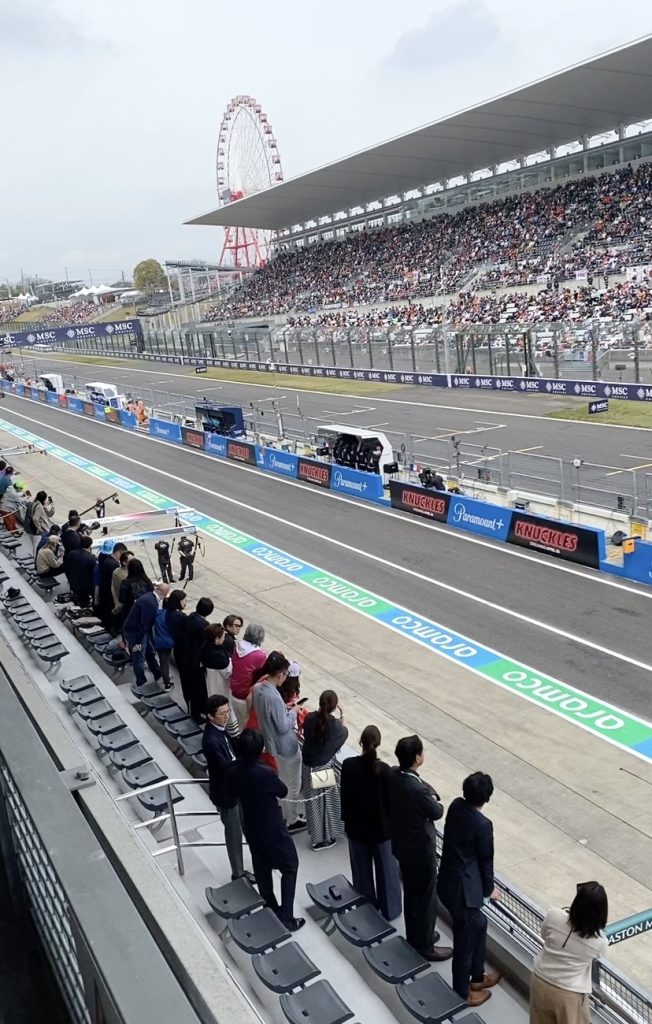
Fan Zone
In between races, we spent most of the time in the FanZone area. There was a Lego model Mercedes car that we took pictures with. There were Honda pop-ups with car displays, as well as the Honda museum which required tickets and a reservation. There was a large stage with DJ’s and regular appearances by team members, drivers and media personalities. Beside the track there were several carnival type rides that were included for free with a three day pass (they did not check this).
We arrived at the track 1 hour before open, and were almost first in line for the Ferris wheel. The ride lasts about 15 minutes, and has 360 degree views of the track and campus. To the right of the fan zone was a station where fans could write messages to support the drivers on pink ribbons and place them on trees that looked like cherry blossoms. There were plenty of Japanese food trucks and stalls. Although I did not purchase food here, I never saw overly long lines.
Nagoya to Suzuka
Upon arriving at Nagoya Station via a local subway, we went to the ticket kiosk and purchased reserved seating on the Kintetsu limited express. You need the Kintetsu basic fare included with the 5-day pass in addition to the reserved seat upcharge ($15-20 one way). If entering the platform from the subway, follow the signs to Kintetsu, and you will know that you are in the right place by the walls and columns decorated with portraits of the drivers. There are also staff on hand to help. The platform closest to the ticket office was the non-reserved train, and the farthest was the limited express with reserved seating.
At the platform, we grabbed canned coffee and onigiri for breakfast. The train ride from Suzuka to Nagoya took 50 minutes. Once we arrived at Shiroko Station, we decided to reserve seats for the return visit at the kiosk. I do NOT recommend doing this as you will block walking traffic to exit the platform! If you are interested in reserved seating, you can book online and change times of your reservations online.
There was a long line to queue for the shuttle buses from Shiroko Station to Suzuka Circuit, but the line moved fairly quickly. In line, we were given a pamphlet that detailed the times of the shuttles to and from the track all weekend. Around 11am, we stood in line for 20 minutes. It was another 20 minute ride to the station. After getting off of the bus, we waited in a line to pay our bus ticket fare. I bought all six passes there, but you could also use your JRT pass. Then, it was a 10 minute walk to security, and we were able to enter fairly quickly.
To return to Shiroko station, fans were directed to the shuttle line from the track. On Friday, we stayed until the closing, and the queue to board the shuttle buses was 90 minutes. On Saturday, we stayed until the track closed, and the shuttle line wait time was only 30 minutes. Surprisingly on Sunday, we almost immediately boarded the shuttle. On Friday, we noticed a very long line outside of what must’ve been Suzuka Circuit Ino Station. We decided not to try this route as there was no line to board the Kintetsu train once we reached Shiroko station. I wanted to join the Reddit/Fan Amp meetup, which was close to our hotel, however I was too exhausted after three days (next time!).
Sightseeing in Japan: Osaka, Kyoto & Tokyo
After the race weekend, we planned another 9 days between Osaka, Kyoto, and Tokyo. Transportation between all of these cities is fairly easy to navigate due to English signage, with the exception of the Tokyo Metro, which is challenging. I recommend downloading the IC card app and preloading it with money to use on your phone. Although the ticket kiosks are a good way to get rid of spare coins, going to the kiosks everytime becomes tedious. Be aware that if you are changing trains, you may need to do a fare adjustment and exit the platform if you have a physical ticket.
In Osaka, do not skip Umeda Sky Building, a skyscraper that overlooks the entire city and has picturesque sunset views over the bay as the city lights turn on. To go to places like the Yamazaki Whiskey distillery or the Ghibli museum, you’ll need to plan in ahead of time, as tickets or lottery applications typically become available one month in advance. Osaka has its own charm because amidst the modern city lies old fish markets and centuries old shrines. Dontonborii is a popular tourist attraction, and worth visiting at least once from dusk into the evening.
Kyoto is a must-visit for anyone interested in traditional Japanese ceremonies. We were lucky enough to be in Japan during the 150th Miyako Odori, a public showcasing of actual Maiko (geisha in training) and Geiko (geisha) acting, singing, and dancing, which otherwise would be reserved for private members of tea houses. As of 2024, many streets in the Gion district have been closed to the public, however, if you book a food or a bar tour, the guide will take you to some very picturesque places. Please remember that people do not appreciate pictures of themselves, their homes, and their establishments without permission, especially in Kyoto where many Maiko are underage.
My favorite shrine in Kyoto is Fushimi Inari Shrine, which features hundreds of red Tori gates leading up a mountain. Travel guides will tell you to go super early in the morning to avoid the crowds, and this is somewhat true if you don’t want to climb too high to get pictures. I’ve found that climbing the mountain to the top any time of day will give you some privacy to take photos, time to explore the additional shrines that lead off the main path, and give you a sense of accomplishment before hitting the bars and restaurants!
Tokyo of course is iconic for its nightlife. Tokyo’s districts have their own unique atmosphere, but my two favorites are Asakusa and Shinjuku. Asakusa is the “old town” of Tokyo, with the highlight being the Buddhist Temple Sensoji. To get a bird’s eye view, walk across the street to the tourist center, which will give you free access to maps and a rooftop view of the area. A common meal in this area is Gyusuji Nikomi(beef tendon stew) and Hoppy, a non-alcoholic beer-like drink that is mixed with alcoholic shōchū. Walk around the area, and you will find several small restaurants that sell these and other small plates. Shinjuku contains a strip of 10 seater bars called Golden Gai, which is a late night spot for locals and tourists trying to find a spot to drink. Many places only sit 5-10 people, and each bar has a different theme. Most bars have a $5-10 USD cover, which typically pays for a small appetizer, and may have a drink minimum. For a more relaxed day, the National Garden and Imperial Palace were perfect places for a stroll and to take pictures with the cherry blossoms.

Ian From The Phillipines
Hi, I’m Ian from the Philippines and I was in Suzuka this year for the Japanese Grand Prix. I’ve been a Ferrari (and Schumi) fan since 1997, but this was my first ever live race. I didn’t know it was possible to have goosebumps for four straight days!
Nagoya
I stayed in Nagoya at the APA Hotel, drove back and forth to the circuit each day in a hire car, and sat in the B2 grandstand at Suzuka. Nagoya is the closest large city to the circuit. If you are taking the train to and from Suzuka, this is the best place to stay. But because I was driving, it was not so convenient. Next time, I would look for an Airbnb in the Mie Prefecture, closer to Suzuka.
Driving to Suzuka
Hiring a car was a great idea. It only took one hour to get to and from the circuit, compared to lining up for the train for two hours, and then had to travel on the train for another hour. I didn’t have to pay for parking, but it was about a 20 minute walk from the circuit. I did see that local business around the track were offering parking for 2k-9k yen ($12-58 USD) per day. I also heard from some fans that the direct bus from Nagoya to Suzuka was a good option with a one hour line to board the buses and one hour travel time. The downside was that the last bus leaves around 7:30pm, which means you can miss some of the later activities. The car rental cost me 60,000 yen ($385 USD) and I paid another approx. 12,000 yen ($77 USD) for tolls and around 10,000 yen ($64 USD) for fuel. I was lucky to make some new friends on Facebook groups who joined me in the car and shared the costs.
B2 Grandstand
B2 was a good choice. This grandstand overlooks the first corner and you can see lots of action. There’s also a distant view of Turns 2 and 3, maybe even Turn 4 if you squint hard enough! This is an open grandstand, so we did get wet during practice when it unexpectedly rained (which was not in the forecast). On the downside, it’s a 10-15 minute walk from the main fan zone behind the V1/V2 grandstands. But the views definitely make up for the walk.
I read there were about 255,000 fans in attendance over the 4 days. You did see it, but not feel it. Japanese fans and locals are so organized and orderly that I didn’t see any security or police the whole time.
Suzuka Advice
Finally, some tips from me. Get your merch on the first day. It runs out fast at Suzuka. I was happy to get my hands on some official Suzuka merchandise on Friday. Another tip is to be friendly and sociable. Get to know the fans sitting near you, as you’ll be together for three days. I brought some small gifts from the Philippines, which broke the ice well! Another bonus of the Japanese Grand Prix being held in spring for the first time was that the cherry blossoms (sakura) were in full blossom!



